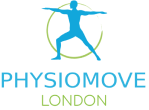If you’re reading this, you might be experiencing stiffness and discomfort in your lower back, hips, or even your chest. Maybe you’ve been struggling with these symptoms for a while, but can’t quite figure out what’s going on. It’s possible that you’re living with Ankylosing Spondylitis (AS).
Ankylosing Spondylitis (AS) is a type of inflammatory arthritis that affects the spine, causing pain, stiffness, and eventually fusion of the vertebrae. It can also affect other joints such as the hips, shoulders, and knees. According to the National Ankylosing Spondylitis Society (NASS), around 200,000 people in the UK have AS.
Understanding Ankylosing Spondylitis
AS typically starts in early adulthood and can have a significant impact on a person’s quality of life. The most common symptoms of AS are back pain and stiffness, especially in the morning or after periods of inactivity. The pain and stiffness can also be accompanied by fatigue and difficulty sleeping. In severe cases, AS can cause deformities in the spine and lead to disability.
This type of arthritis is more common in men than women, and typically develops between the ages of 20 and 40. This condition can be difficult to diagnose, but early detection and treatment are key to managing symptoms and preventing long-term damage.
Understanding Ankylosing Spondylitis is crucial for individuals affected by this condition and their loved ones. It’s important to raise awareness about this condition to promote early detection, timely intervention, and effective management strategies. By fostering understanding, we can empower those with Ankylosing Spondylitis to seek appropriate treatment, make informed lifestyle choices, and improve their overall wellbeing.
The Role of Physiotherapy in Ankylosing Spondylitis
Although there is no cure for AS, there are various treatments available that can help to manage symptoms and improve quality of life. Physiotherapy is one such treatment that can be very effective in reducing pain and stiffness, improving posture, and maintaining mobility.
According to a study published in the Journal of Rheumatology, a combination of physiotherapy and patient education was effective in improving spinal mobility and reducing the risk of spinal deformities in people with AS.
In addition to exercise, a physiotherapist may also use other techniques such as manual therapy, massage, and acupuncture to help manage symptoms of AS. Manual therapy involves hands-on techniques such as mobilisation and manipulation to help improve joint function and reduce pain and stiffness. Massage can also help to relieve muscle tension and reduce pain, while acupuncture has been shown to be effective in reducing pain and improving mobility in people with AS.
Types of Physiotherapy for Ankylosing Spondylitis
There are several modalities that can be used to manage Ankylosing Spondylitis, including:
- Stretching and range of motion exercises: These exercises can help improve flexibility and reduce stiffness in the joints.
- Strengthening exercises: Strengthening exercises can help improve posture and reduce the risk of falls and other injuries.
- Manual therapy: Manual therapy techniques, such as massage and manipulation, can help reduce pain and improve mobility.
It is important for people with AS to start physiotherapy as early as possible to help prevent or minimise the development of spinal deformities and other complications associated with the condition. It is also important to maintain a regular exercise routine and to continue to see a physiotherapist on a regular basis to ensure that symptoms are managed effectively.
Other Tips for Managing Ankylosing Spondylitis
In addition to physiotherapy, there are other tips that can help manage the symptoms of Ankylosing Spondylitis. These include:
- Practise good posture: Pay attention to your posture throughout the day, whether you’re sitting, standing, or walking. Maintaining proper alignment can help reduce strain on your spine and improve your overall comfort.
- Take breaks and avoid prolonged sitting: If you have a sedentary job or tend to sit for extended periods, make it a habit to take regular breaks. Stand up, stretch, and walk around to prevent stiffness and promote better circulation.
- Use ergonomic supports: Consider using ergonomic supports, such as a supportive chair or lumbar roll, to help maintain proper posture and reduce strain on your back while sitting or working. Check out our post on Instagram about workplace ergonomics!
- Apply heat or cold therapy: Heat or cold therapy can provide temporary relief from pain and stiffness. Experiment with both heat packs and cold packs to see which one works best for you. Apply them to the affected areas for 15-20 minutes at a time, several times a day as needed. Make sure to watch our Instagram reels on heat and ice applications.
- Engage in stress management techniques: Stress can exacerbate symptoms of Ankylosing Spondylitis. Explore stress management techniques that work for you, such as deep breathing exercises, meditation, yoga, or engaging in hobbies and activities that help you relax.
- Get quality sleep: Adequate and restful sleep is essential for managing any chronic condition. Create a sleep-friendly environment, establish a consistent bedtime routine, and consider using pillows or other supports to find a comfortable sleeping position.
Ankylosing Spondylitis can be a challenging condition to manage, but physiotherapy can be an effective way to deal with it. If you are struggling with the symptoms of Ankylosing Spondylitis, it is important to seek help.
Physiomove London is here to help you manage your symptoms and improve your quality of life. Book a consultation with us today to see how physiotherapy can help you manage your Ankylosing Spondylitis symptoms.
Ankylosing Spondylitis FAQ
Q: How long does physiotherapy treatment for Ankylosing Spondylitis last?
A: The duration of physiotherapy treatment for Ankylosing Spondylitis varies from person to person and depends on the severity of the condition. Your physiotherapist will create a personalised treatment plan for you that may include regular sessions for several weeks or months.
Q: Can physiotherapy cure Ankylosing Spondylitis?
A: While physiotherapy cannot cure Ankylosing Spondylitis, it can help manage the symptoms and improve quality of life for patients. It is an important part of a comprehensive treatment plan that may also include medication and lifestyle changes.
Q: What exercises are recommended for Ankylosing Spondylitis patients?
A: Exercises that focus on stretching and strengthening the spine, improving posture, and increasing flexibility are recommended for Ankylosing Spondylitis patients. Your physiotherapist will create a personalised exercise plan for you that may include activities such as yoga, Pilates, and swimming.


